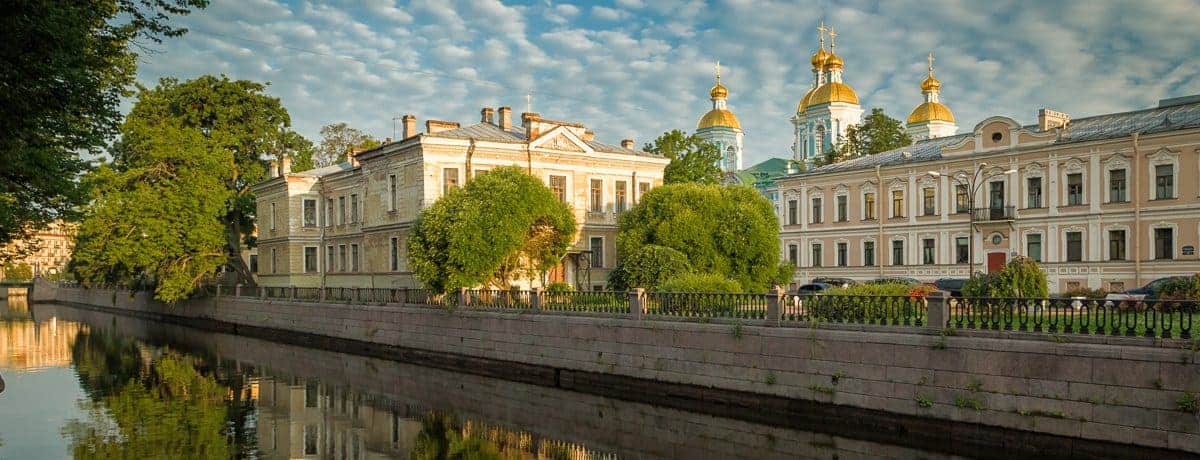Following the Ottoman conquest of Constantinople in 1453, the peoples of Russia and Ukraine began to look to the West not only for trading partners, but also for political, intellectual and artistic models. The Westernization of northern Slavic societies rooted in Byzantine traditions of governance and religion accelerated during the tumultuous seventeenth century, which saw the founding of the Romanov dynasty (1613), the Old-Ritualist Schism, and the accession of Tsar Peter the Great (1689), who transferred the capital from Moscow to Saint Petersburg. Meanwhile the liturgical arts of architecture, iconography and singing all began to display influence from the Baroque culture of the contemporary West, evident in music from the adoption of staff notation and the cultivation of Italian and Central European styles of polyphonic composition (so called partesny singing).
Western influence on the music of the Russian Orthodox Church reached its apogee during the reign of the Empress Catherine II the Great (1762–96), who continued the practice of her immediate predecessors of appointing Roman Catholic composers of Italian opera as directors of the Imperial Court Chapel. The first of these was Baldassare Galuppi (1706–1785), a student of Antonio Lotti and Maestro di cappella at San Marco in Venice whose three-year contract for service in St Petersburg (1765–68) was secured after protracted negotiations with the Venetian Senate. In addition to producing the secular and ceremonial music for voices and instruments that had been expected of previous imported maestri, Galuppi composed unaccompanied choral works in Church Slavonic for Russian Orthodox worship. These range from such compact settings of hymns as “Only-Begotten Son” from the Divine Liturgy of St. John Chrysostom to “Pass Judgment, Lord” and other lengthy works in multiple movements known as sacred concertos. Often featuring texts chosen freely from the Bible, sacred concertos came to be performed during the communion of the clergy at the Divine Liturgy, where they would supplement or replace the chanting of the liturgically appointed communion verse.
Friday 28 April, 7:30pm
St. Mark’s Cathedral
Portland
Saturday 29 April, 8:00pm
St. Mary’s Cathedral
Sunday 30 April, 3:00pm
St. Stephen’s Catholic Church
Galuppi also influenced the development of Russian Orthodox music by fostering the careers of two court singers of Ukrainian origin: Maxim Sozontovich Berezovsky (ca. 1745–77) and Dmitri Stepanovich Bortnyansky (1751–1825), both of whom were sent to Italy for advanced musical study (respectively, 1769–73 and 1768–79). Berezovsky may already have been active as composer of Orthodox sacred music at the time of Galuppi’s arrival, for there is evidence of mutual influence, as well as conflicting attributions for several works including the settings of ‘It Is Truly Right’ and the Lord’s Prayer from the Divine Liturgy performed in this program.
The only other Italian opera composer known to have written a significant body of music for the Russian Orthodox Church was Giuseppe Sarti (1729–1802). Between engagements for the Danish monarchy in Copenhagen, Sarti was maestro di coro of the Ospedale della Pietà in Venice in 1766–67. Sarti left a subsequent post as maestro di cappella at Milan Cathedral (1779–84) for in Russia, where he would remain for nearly twenty years, during which he would serve two terms (1784–86 and 1790–1801) as director of the Court Chapel in St Petersburg and teach students including the Ukrainian Artemy Lukyanovich Vedel (1767–1808) and the Russian Stepan Anikiyevich Degtiarev (1766–1813), a serf of Count Sheremetev who accompanied Sarti on a journey to Italy in 1790.
By the time that Bortnyansky succeeded Sarti as director of the Imperial Court Chapel in 1801, it had become the most important musical establishment in the Russian Church. Granted censorship by over publications of Russian Orthodox church music in 1816, Bortnyansky consolidated musical forms and practices that to this day remain the basis for liturgical singing in many Slavic churches. While further developing the choral genres pioneered by Galuppi and Sarti, he also worked in two ways to domesticate improvised traditions of harmonizing Slavic chant: 1) through the creation of through-composed settings of (mainly Kievan) chant melodies; and 2) by publishing in 1815 a collection of Simple Chant for the hymns and responses of Divine Liturgy notated in alto and bass parts. As Joppi Harri has recently shown, this two-part texture conveys in outline the substance of the formulaic ‘Court Chant’ that would be systematically notated by Bortnyansky’s successors at the Imperial Chapel Alexei Fyodorovich Lvov (1798–1870) and Nikolai Ivanovich Bakhmetev (1807–91).


You must be logged in to post a comment.